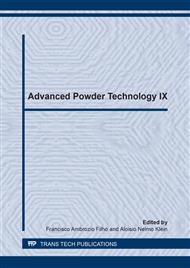p.569
p.574
p.579
p.585
p.590
p.596
p.601
p.607
p.613
Thermal Analysis Investigation of NdFeB Bonded Magnets
Abstract:
NdFeB bonded magnets are produced by compression molding and curing. Typical raw materials are mixtures of epoxy resin and Nd2Fe14B flakes, produced mostly by melt spinning. The curing temperature should be adjusted for obtaining the best in terms of mechanical properties without overheating the pressed component. High curing temperatures can strongly oxidize Nd, generating more heat, and burning may occurs. The curing reaction is exothermic, thus the actual curing temperature will depend on the cured mass. This paper investigates this heating generation during curing, using DSC experimental apparatus.
Info:
Periodical:
Pages:
590-595
Citation:
Online since:
December 2014
Keywords:
Price:
Сopyright:
© 2014 Trans Tech Publications Ltd. All Rights Reserved
Share:
Citation:


